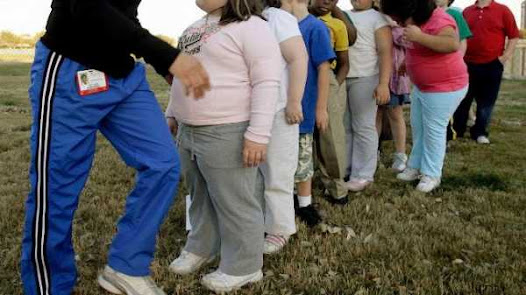
Here are some ways to help your child develop good attitudes about eating
Don't place your child on a restrictive diet
Children should never be placed on a restrictive diet to lose weight, unless a doctor supervises one for medical reasons. Limiting what children eat may be harmful to their health and interfere with their growth and development.
To promote proper growth and development and prevent overweight, parents should offer the whole family a wide variety of foods from each of the food groups displayed in the Food Guide Pyramid. The Food Guide Pyramid applies to healthy people ages 2 years and older.
The Food Guide Pyramid illustrates the importance of balance among food groups in a daily eating pattern. Select most of your daily servings of food from the food groups that are the largest in the picture and closest to the bottom of the Pyramid.
- Most of the foods in your diet should come from the grain products group (6-11 servings), the vegetable group (3-5 servings), and the fruit group (2-4 servings). (See chart for suggested serving sizes.)
- Your diet should include moderate amounts of foods from the milk group (2-3 servings) and the meat and beans group (2-3 servings).
- Foods that provide few nutrients and are high in fat and sugars should be used sparingly. Fat should not be restricted in the diets of children younger than 2 years of age.
Reducing fat is a good way to cut calories without depriving your child of nutrients. Simple ways to cut the fat in your family's diet include eating lowfat or nonfat dairy products, poultry without skin and lean meats, and lowfat or fat-free breads and cereals. Making small changes to the amount of fat in your family's diet is a good way to prevent excess weight gain in children: however, major efforts to change your child's diet should be supervised by a health professional. In addition, fat should not be restricted in the diets of children younger than 2 years of age. After that age, children should gradually adopt a diet that contains no more than 30 percent of calories from fat by the time the child is about 5 years old.
Don't overly restrict sweets or treats
While it is important to be aware of the fat, salt, and sugar content of the foods you serve, all foods-even those that are high in fat or sugar-have a place in the diet, in moderation.
Encourage your child to eat slowly
A child can detect hunger and fullness better when eating slowly.
Eat meals together as a family as often as possible
Try to make mealtimes pleasant with conversation and sharing, not a time for scolding or arguing. If mealtimes are unpleasant, children may try to eat faster to leave the table as soon as possible. They then may learn to associate eating with stress.
Involve children in food shopping and preparing meals
These activities offer parents hints about children's food preferences, teach children about nutrition, and provide children with a feeling of accomplishment. In addition, children may be more willing to eat or try foods that they help prepare.
Plan for snacks
Continuous snacking may lead to overeating, but snacks that are planned at specific times during the day can be part of a nutritious diet, without spoiling a child's appetite at mealtimes. You should make snacks as nutritious as possible, without depriving your child of occasional chips or cookies, especially at parties or other social events. Below are some ideas for healthy snacks.
Discourage eating meals or snacks while watching TV
Try to eat only in designated areas of your home, such as the dining room or kitchen. Eating in front of the TV may make it difficult to pay attention to feelings of fullness, and may lead to overeating.
Make sure your child's meals outside the home are balanced
Find out more about your school lunch program, or pack your child's lunch to include a variety of foods. Also, select healthier items when dining at restaurants.
Continue.................
Tidak ada komentar:
Posting Komentar